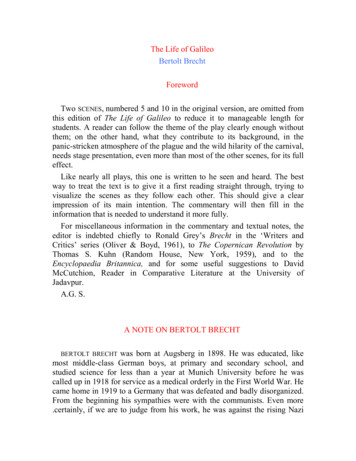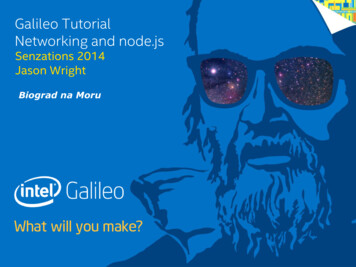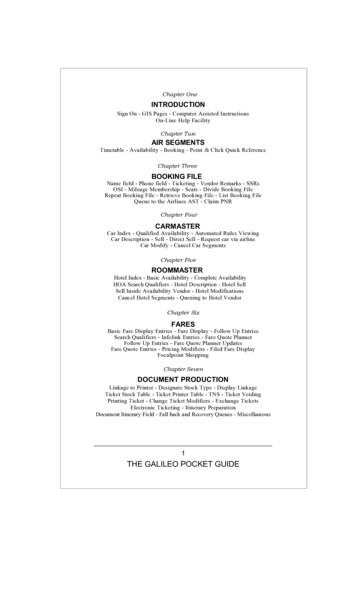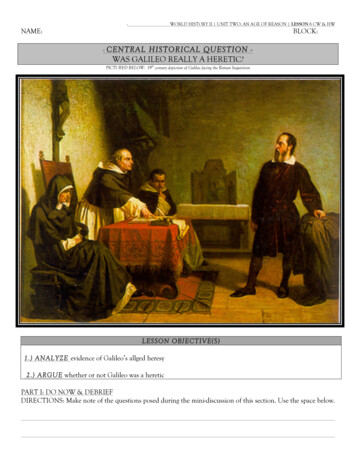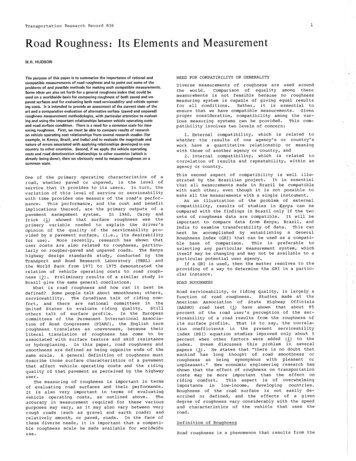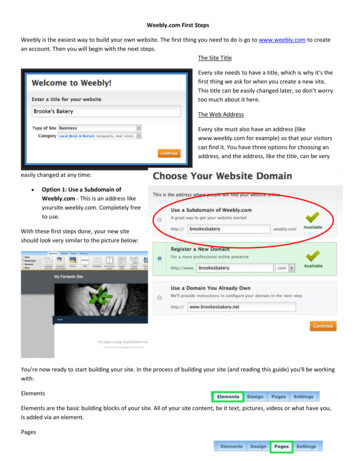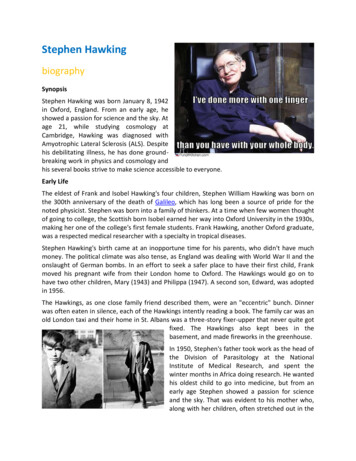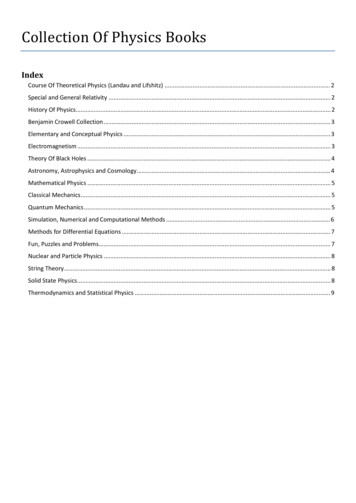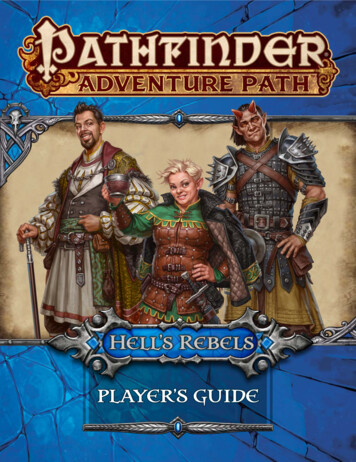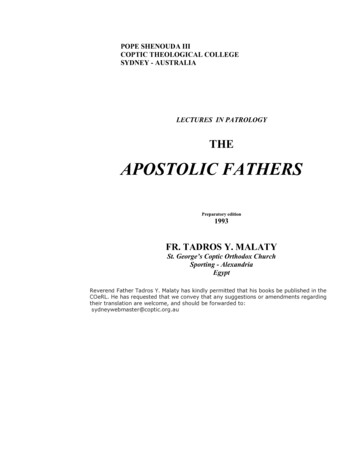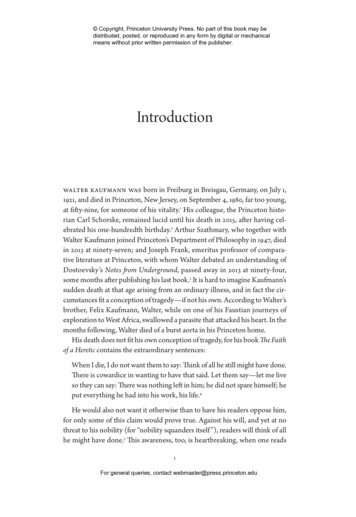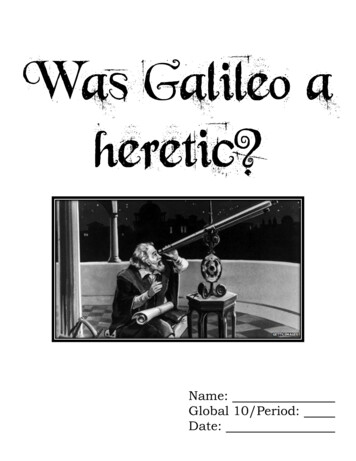
Transcription
Was Galileo aheretic?Name:Global 10/Period:Date:
Heliocentrism and the Catholic Church Timeline 1543: Nicolas Copernicus published a book supporting the heliocentrictheory. 1545: Pope Paul III called the Council of Trent to stop the spread ofProtestantism and to revive the Catholic Church. It said only the Church couldinterpret the Bible, and it set up the Inquisition to combat heresy. 1564: Galileo Galilei was born. 1600: The Inquisition tried Giordano Bruno and burned him at the stake forheresy. He supported the heliocentric theory. 1609: Galileo invented a telescope that convinced him of the heliocentricmodel. 1615: The Catholic Church told Galileo to stop sharing his theory in public. 1615: Paolo Antonio Foscarini published a book defending Copernicus andarguing the heliocentric model did not go against the Bible. 1616: The Catholic Church added Copernicus’s work (and others supportingthe heliocentric model) to its list of banned books. 1632: Galileo published Dialogue Concerning the Two Chief World Systems. 1633: The Inquisition charged Galileo with heresy and tried him in Rome. 1642: Galileo died. 1661: Isaac Newton began teaching Galileo and Copernicus’s ideas in England. 1758: The Catholic Church ended the ban on books teaching the heliocentricmodel. 1939: Pope Pius XII called Galileo a hero of research. 1979: Pope John Paul II ordered an investigation into the Church’s treatmentof Galileo.
Document A: Galileo’s Letter (Modified)Galileo wrote the following letter to Duchess Christina of Tuscany in 1615. In this letter, he defendshimself against the charges of heresy.Some years ago I discovered in the heavens many things that had not beenseen before our own age. The novelty of these things . . . stirred up severalprofessors against me. They hurled various charges and published numerouswritings filled with vain arguments, and they made the grave mistake ofsprinkling these with passages taken from places in the Bible, which theyfailed to understand properly. The reason given for attacking the opinion thatthe earth moves and the sun stands still is that in many places in the Bible onemay read that the sun moves and the earth stands still. Since the Bible cannoterr, it follows that anyone who claims that the sun is motionless and the earthmovable takes an erroneous and heretical position. With regard to thisargument, I think in the first place that it is very pious to say and prudent toaffirm that the holy Bible can never speak untruth whenever its true meaningis understood. But I believe nobody will deny that the Bible is often verycomplex, and may say things which are quite different from what its barewords signify. . . . I do not believe that the same God who has given senses,reason and intellect has intended us to not to use them. . . . He would notrequire us to deny sense and reason in physical matters of direct experience. . . Can an opinion be heretical and yet have no concern with the salvation ofsouls?Source: Galileo Galilei, “Letter to the Grand Duchess Christina of Tuscany,” 1615.Vocabularynovelty: original or unusual vain: conceitederr: to be wrong erroneous: wrong pious: devoutly religiousprudent: wise signify: mean
Document A: Galileo’s Letter1. (Sourcing) When was this document written?2. (Contextualization) Look at your timeline. Why might Galileo write a letter defending himself at thistime?3. (Close Reading) According to Galileo, why do some people think his teachings are heretical?4. (Close Reading) How does Galileo defend himself against these charges?5. (Context) Using the information on your timeline, do you think the Catholic Church would acceptGalileo’s defense? Why or why not?
Document B: Cardinal BellarmineCardinal Robert Bellarmine was in charge of dealing with difficult issues connected to the Church’s powerand beliefs during the Galileo controversy. He wrote the following letter to Paolo Antonio Foscarini inresponse to Foscarini’s book defending Galileo. Historians don’t believe Bellarmine ever saw Galileo’s1615 letter (Document A).As you know, the Council [of Trent] prohibits interpreting the Scripturescontrary to the common agreement of the holy Fathers. And if you would readnot only the Fathers but also the commentaries of modern writers on Genesis,Psalms, Ecclesiastes and Joshua, you would find that all agree in explainingthat the sun is in the heavens and moves swiftly around the earth, and that theearth is far from the heavens and stands immobile in the center of theuniverse. . . . It would be just as heretical to deny that Abraham had two sonsand Jacob twelve, as it would be to deny the virgin birth of Christ, for both aredeclared by the Holy Ghost through the mouths of the prophets and apostles. . . I say that if there were a true demonstration that the sun was in the centerof the universe and the earth in the third sphere, and that the sun did nottravel around the earth but the earth circled the sun, then it would benecessary to proceed with great caution in explaining the passages ofScripture which seemed contrary, and we would rather have to say that wedid not understand the Scripture than to say that something was false whichhas been demonstrated. But I do not believe that there is any suchdemonstration; none has been shown to me. . . . [One] clearly experiences thatthe earth stands still and that his eye is not deceived when it judges that themoon and stars move.Source: Cardinal Robert Bellarmine, “Letter on Galileo’s Theories,” 1615.Vocabularycontrary: against or the opposite of somethingprophets: someone who speaks for GodGenesis, Psalms, Ecclesiastes and Joshua:apostles: religious messengerssections of the Biblescripture: text from the Bible
Document B: Cardinal Bellarmine1. (Close Reading) Explain two reasons Cardinal Bellarmine gave for believing the geocentric theory.a.b.2. (Close Reading) How did Cardinal Bellarmine respond to the following arguments from Galileo?a. The Bible passages about the sun standing still should not have been interpreted literally.b. The model of the universe (heliocentric or geocentric) is not a matter of salvation.3. (Context) Why do you think the Catholic Church was so committed to defending the literal meaning ofthe Bible passages?
Judgment of GalileoImagine you are a member of the Inquisition at Galileo’s trial.You have the following evidence:Heliocentrism and the Catholic Church Timeline, Document A, and Document B.Decide your answer to the question:Was Galileo really a heretic?Explain your response below.Galileo (was/was not) a heretic because . . . Reason 1:o Quote from a document to support your reason: Reason 2:o Quote from a document to support your reason:
Document C: Condemnation of Galileo (Modified)In 1632, Galileo, who had been teaching and writing about the idea that the Earth moved around the sun,was summoned to Rome to stand trial. After questioning the relevant witnesses, the judges issued thefollowing condemnation of Galileo.You, Galileo of Florence, were denounced in 1615, by this Holy Office, forholding as true a false doctrine taught by many, namely, that the sun isimmovable in the center of the world, and that the earth moves . . . also, forexplaining the Scriptures according to your own meaning. Therefore . . . by thedesire of his Holiness and the Most Eminent Lords, Cardinals of this supremeand universal Inquisition, the two propositions of the stability of the sun, andthe motion of the earth, were qualified as follows: 1. The proposition that thesun is in the center of the world and immovable from its place is absurd,philosophically false, and formally heretical; because it is expressly contraryto Holy Scriptures. 2. The proposition that the earth is not the center of theworld, nor immovable, but that it moves is also absurd, philosophically false,and, theologically considered, at least erroneous in faith. Therefore, in themost holy name of our Lord Jesus Christ and of His Most Glorious MotherMary, We pronounce, judge, and declare, that you Galileo . . . have madeyourself suspected by this Holy Office of heresy, that is, of having believed andheld the doctrine (which is false and contrary to the Holy and DivineScriptures) that the sun is the center of the world, and that it does not movefrom east to west, and that the earth does move, and is not the center of theworld; also, that an opinion can be held and supported as probable, after it hasbeen declared contrary to the Holy Scripture.Source: “The Crime of Galileo: Indictment and Abjuration of 1633.”condemnation: a statement of very strongcriticismscripture: text from the BibleVocabularydenounce: to declare something is wrong or evildoctrine: a set of beliefseminent: distinguished, high in station
proposition: a statement expressing a judgmentor opinionDocument C: Condemnation of Galileo1. (Contextualization) Given what you know about the time period, how do you think the Catholic Churchruled in Galileo’s case? Why?2. (Close reading) By the end of the trial, what was the Catholic Church’s position on the heliocentrictheory?3. (Close Reading) What two reasons did the Church give for declaring Galileo was a heretic?a.b.
Document D: New York Times Article (Modified)In 1979, Pope John Paul II ordered an investigation of the Catholic Church’s treatment of Galileo. Thefollowing article from 1992 summarizes the conclusions of the investigation.Vatican Science Panel Told By Pope: Galileo Was RightMoving formally to right a wrong, Pope John Paul II acknowledged in a speechtoday that the Roman Catholic Church had erred in condemning Galileo 359years ago for asserting that the Earth revolves around the Sun. The address bythe Pope before the Pontifical Academy of Sciences closed a 13-yearinvestigation into the Church's condemnation of Galileo in 1633, one ofhistory's most notorious conflicts between faith and science. Galileo wasforced to recant his scientific findings to avoid being burned at the stake andspent the remaining eight years of his life under house arrest. John Paul saidthe theologians who condemned Galileo did not recognize the formaldistinction between the Bible and its interpretation. "This led them move aquestion which in fact pertained to scientific investigation into the realm ofthe doctrine of the faith.” Though the Pope acknowledged that the Church haddone Galileo a wrong, he said the 17th-century theologians were working withthe knowledge available to them at the time.Source: “Vatican Science Panel Told by Pope: Galileo Was Right,”New York Times, November 1, 1992.err: to make a mistakecondemn: express complete disapprovalrecant: to say that one no longer holds a beliefVocabularytheologians: individuals who study religiondoctrine: a set of beliefs
Document D: The New York Times1. (Close Reading) Why did Pope John Paul say the Church’s treatment of Galileo was wrong?2. (Contextualization) Why was it easier for the Church to side with Galileo in 1992 than it was in 1633?Putting it in Context1. Based on this controversy, how was the historical context* of the 17th century different from 1979?2. How might people understand and study our beliefs in 300 years?*Historical context refers to the moods, attitudes, and conditions that existed in a certaintime. Context is the "setting" for an event that occurs, and the elements, conditions, and characteristics ofthis specific time will have an impact on the relevance of the event.
arguing the heliocentric model did not go against the Bible. 1616: The Catholic Church added Copernicus’s work (and others supporting the heliocentric model) to its list of banned books. 1632: Galileo published Dialogue Concerning the Two Chief World Systems. 1633: The Inquisition charged
